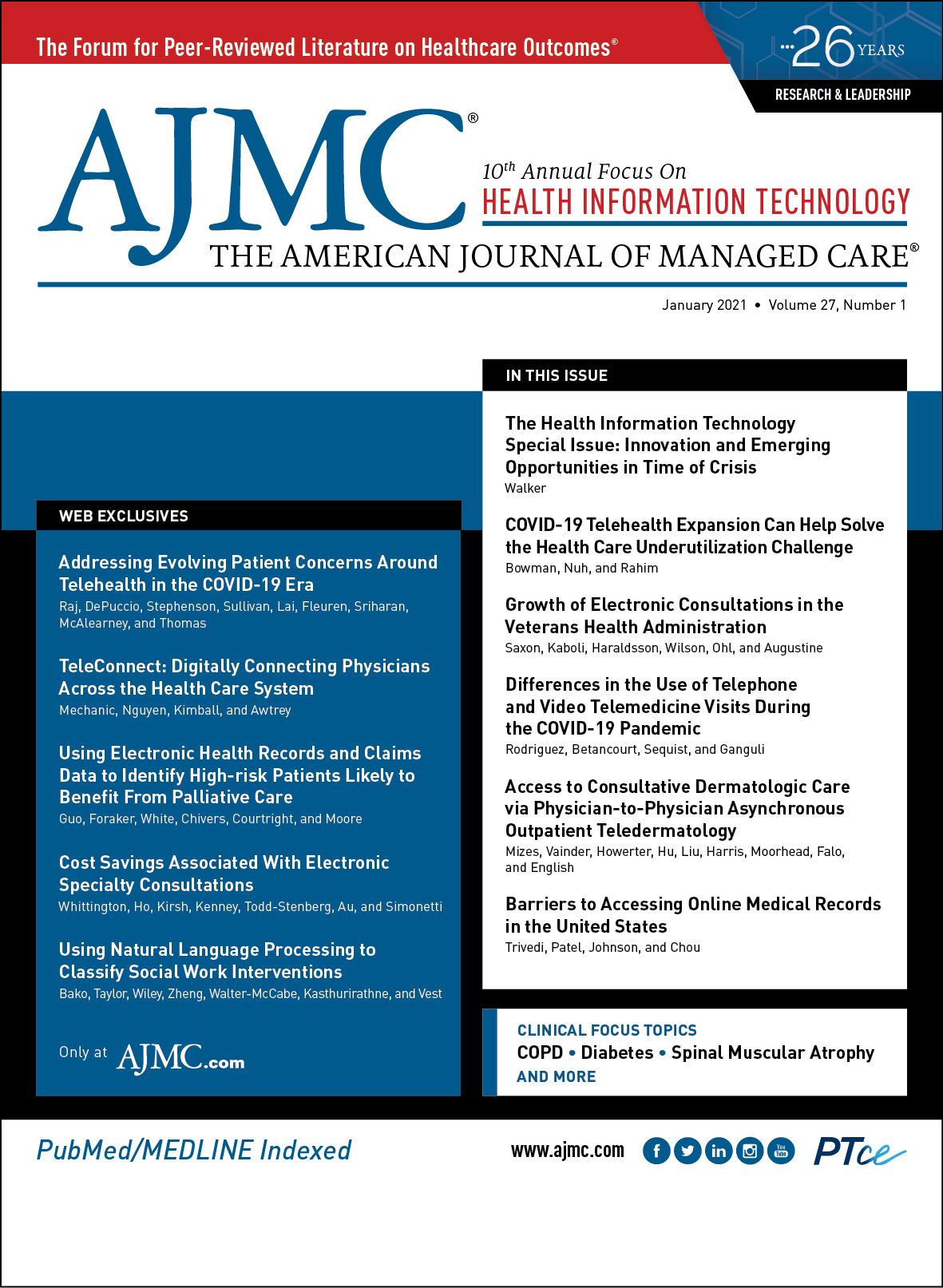- Center on Health Equity & Access
- Clinical
- Health Care Cost
- Health Care Delivery
- Insurance
- Policy
- Technology
- Value-Based Care
From the Editorial Board: Sachin H. Jain, MD, MBA
For years, health care leaders told us that one day, digital health would become a dominant mode of health care delivery. Now, in large part due to the coronavirus disease 2019 pandemic, that day has come. In December 2020, 20% of physician visits were via telehealth—down from 50% in April, but up from 1% before the pandemic.1 As the articles in this issue of the journal demonstrate, further adoption of telehealth will require not just its widespread acceptance as a viable way to deliver care, but also changes in payment models and regulatory frameworks. What I hope does not get left out of this discussion is the imperative to ensure that people on the other side of “the digital divide”—and specifically older adults—don’t get left behind.
The growth in telehealth visits among older adults has largely paralleled that among other age groups. An August 2020 study conducted by the University of Michigan found that telehealth visits among US adults over 50 jumped from 4% in May 2019 to 30% in June 2020.2
This situation presents both an opportunity and a dilemma for patients and providers alike. Telehealth and, indeed, a whole suite of virtual tools allow us to provide better, more comprehensive care to our patients in ways that are far more convenient for them. For example, a study by the American Hospital Association found that 3.6 million people forgo medical care each year because of transportation issues including lack of vehicle access.3 For older adults, transportation is the third most commonly cited barrier to accessing health services. For people in this category, remote care could make transportation problems largely irrelevant and provide them with a consistent way to access care.
Unfortunately, according to the Michigan study, just 64% of older Americans said they were “comfortable with video conferencing technologies.” That means that more than one-third of older people face significant challenges when it comes to getting the care they need. This translates to about 40 million Americans who might put off getting care simply because they lack the technological know-how to remotely communicate with their providers.
Aware of these challenges, SCAN Health Plan, the not-for-profit Medicare Advantage organization that I lead, tested a program last year through which we offered zero-cost tech support to some of our members. We helped a 95-year-old man set up a Gmail account. We helped a woman in her mid-70s upload a picture of her injured foot to her primary care physician. Based on the clearly demonstrated need for this program and our success at getting older adults to access care virtually, we expanded the initiative in 2021 to all of our members.
Telehealth and other forms of virtual care are finally here to stay. We spent years waiting for these technologies to go mainstream. Now that they have, let’s make sure we meet our patients where they are and support them as they adapt to these new ways of accessing care.
References
1. Telehealth adoption tracker. The Chartis Group. Accessed January 5, 2021. https://reports.chartis.com/telehealth_trends_and_implications-aug2020/
2. Telehealth visits have skyrocketed for older adults but concerns, barriers remain. News release. University of Michigan. August 17, 2020. Accessed January 5, 2021. https://news.umich.edu/telehealth-visits-have-skyrocketed-for-older-adults-but-concerns-barriers-remain/
3. Health Research and Educational Trust. Transportation and the role of hospitals. American Hospital Association. November 2017. Accessed January 5, 2021. http://www.hpoe.org/Reports-HPOE/2017/sdoh-transportation-role-of-hospitals.pdf

Managed Care Reflections: A Q&A With Laurie C. Zephyrin, MD, MPH, MBA
November 12th 2025To mark the 30th anniversary of The American Journal of Managed Care, each issue in 2025 includes a special feature: reflections from a thought leader on what has changed—and what has not—over the past 3 decades and what’s next for managed care. The November issue features a conversation with Laurie C. Zephyrin, MD, MPH, MBA, senior vice president for achieving equitable outcomes at the Commonwealth Fund. This interview has been edited for length and clarity.
Read More
